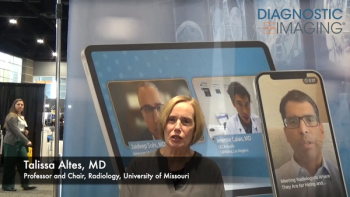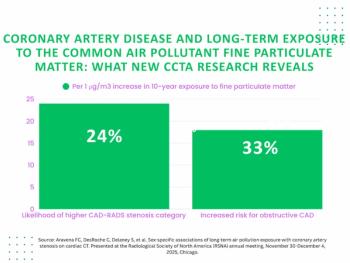
Speech recognition rewards investment of time and effort
Speech recognition may be defined as the process by which a computer maps acoustic speech signs to text. These systems hold immense appeal-at least in theory. They eliminate transcription delays and some unnecessary consultations and phone calls and make lost reports a thing of the past. They can improve accuracy, provide cost savings, and enable radiology departments to better cope with sudden increases in demand.
Speech recognition may be defined as the process by which a computer maps acoustic speech signs to text. These systems hold immense appeal-at least in theory. They eliminate transcription delays and some unnecessary consultations and phone calls and make lost reports a thing of the past. They can improve accuracy, provide cost savings, and enable radiology departments to better cope with sudden increases in demand.
As with any new technology, realizing these benefits is not straightforward, however, and numerous practical problems may arise.
Most important, errors that occur in speech recognition usually differ from those of manual transcription. Computers do not recognize certain obvious errors, and although words are spelled correctly, they may not be the correct words. In addition, a radiologist who is probably already overworked is expected to perform a function previously assigned to an administrative assistant.
Some systems are complex and require substantial training, so generating reports initially takes longer, and radiologists gain no immediate benefits. There is often a lack of integration between the radiology information system and the speech recognition system. Ergonomics is another important consideration, and adjusting to new ways of working can be difficult in a busy, noisy department.
But perseverance can pay off. Referring clinicians will be delighted by the almost instantaneous availability of reports, which is also good news for patient care. Private practitioners will benefit from the cost savings that result from eliminating the transcription process. Researchers from Singapore describe their positive experiences of this technology in an article that appears in this issue of Diagnostic Imaging Asia Pacific.
At the European Congress of Radiology in March, Prof. James Thrall, radiologist-in-chief at Massachusetts General Hospital in Boston, U.S., had the following advice for potential users:
"In 20 years as a department chairman, voice recognition has been the hardest technology to implement and the most controversial among staff radiologists. It is also the technology that has had the greatest simultaneous impact on reducing costs and improving quality of care and service. It is worth the time and effort."
Thrall urged radiologists to make reports shorter, avoid words and phrases that can cause difficulties, and use simple, declarative statements. He stressed the need to limit vocabulary to the specific application. Neuroradiology, for example, has a different vocabulary than thoracic radiology. Simplified language modeling boosts accuracy and increases users' success with voice recognition systems.
Newsletter
Stay at the forefront of radiology with the Diagnostic Imaging newsletter, delivering the latest news, clinical insights, and imaging advancements for today’s radiologists.




























